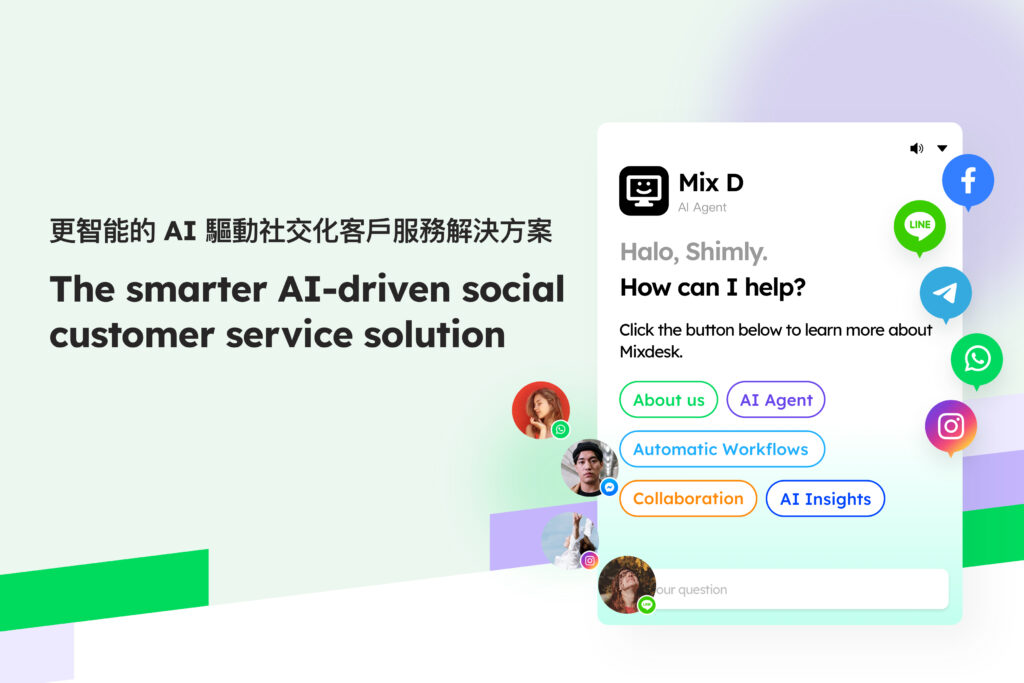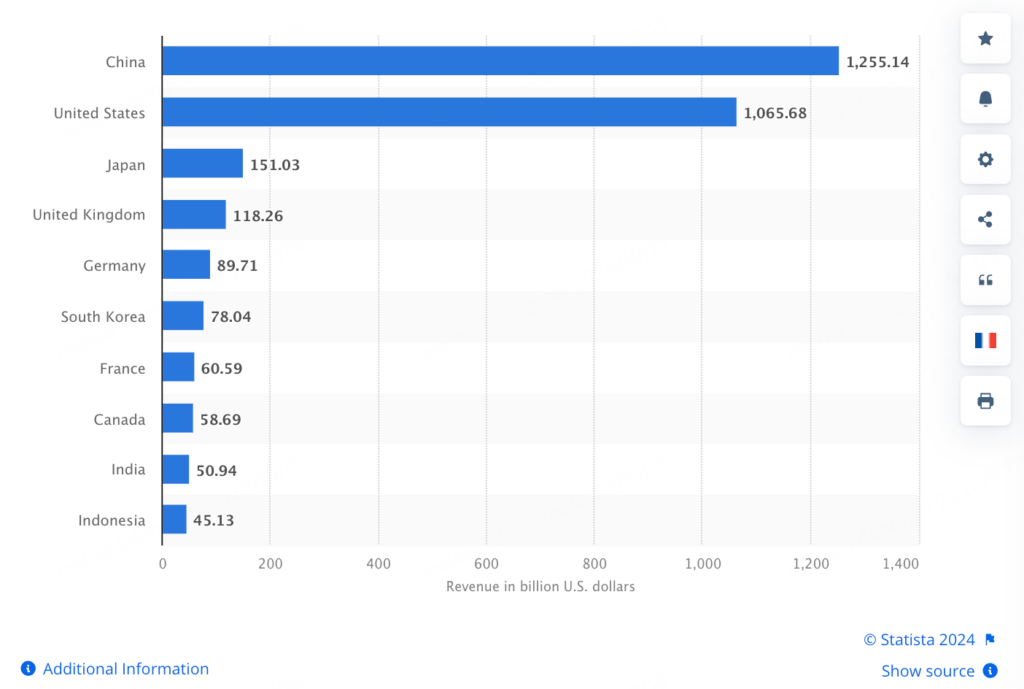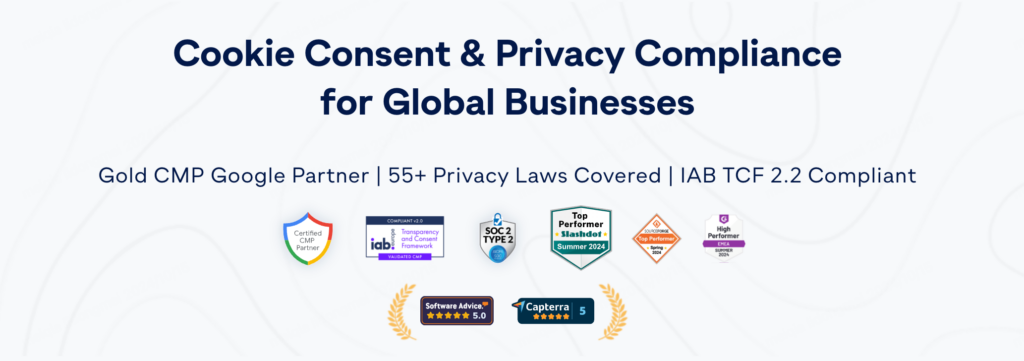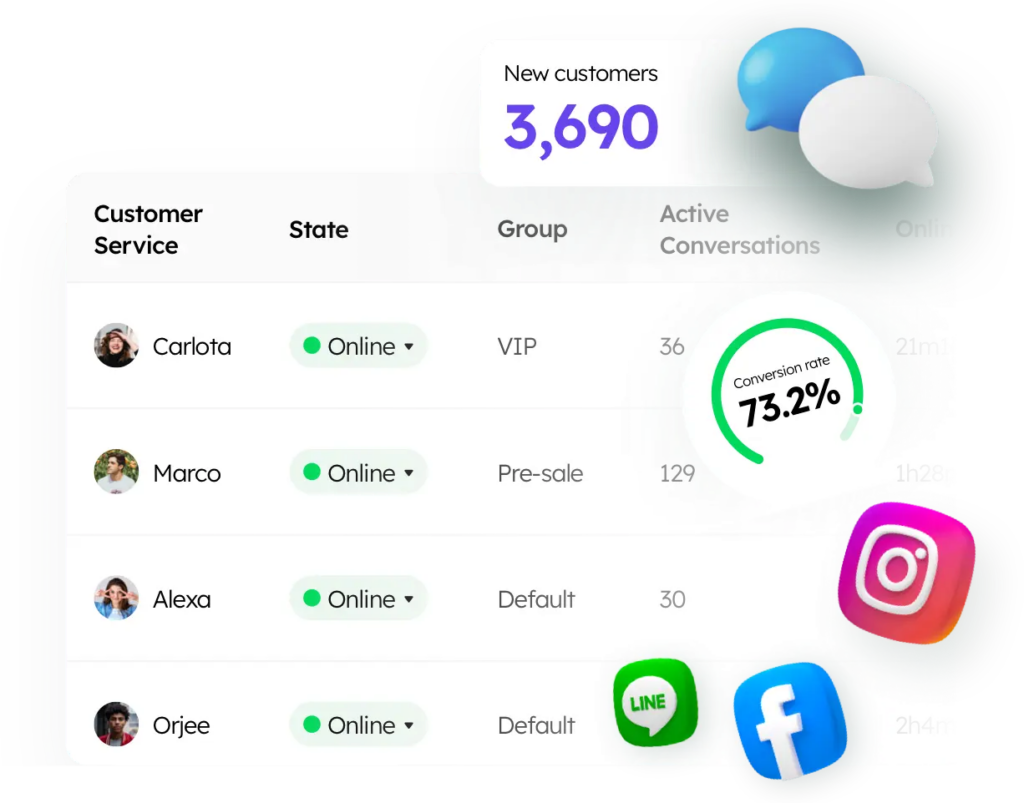Author of this article:Miya, Search engine optimization expert
In the current globalized market,Enterprises go to seaIt has become one of the key strategies to find new growth opportunities. However, with the opening up of the global market, competition has become more intense. In order for companies to stand out in this complex and changeable global environment, it is no longer enough to rely on product quality and price advantages alone.Customer serviceThe quality and experience, especially efficient customer service, have become the focus of new competition. By providing excellent service, companies can not only win loyal customers, but also gain more market share in the fierce market competition.
Mixdesk
AI Agent

- Mixdesk AI Agent
- 1. Challenges and opportunities in a globalized environment
- 2. How can overseas companies stand out through efficient services?
- 3. Key strategies for enterprises to serve overseas
- 4. Integrated services for enterprises going overseas: integrated solutions
- 5. Corporate overseas advertising strategy: Accurately reach global customers
- 6. Challenges and coping strategies for enterprises going overseas
- 7. Service-driven global Growth path
1. Challenges and opportunities in a globalized environment
1.1 Market diversification and cultural differences
forEnterprises go to seaIn terms of entering the global market, the primary challenge is to deal with the market diversity and cultural differences of various countries and regions. Whether it is the market acceptance of the product or the customer's expectations of the service, it varies from region to region. Therefore, companies must adjust their product and service strategies according to the characteristics of different markets in order to succeed.
Cases of market differentiation:
According to Statista's dataIt shows that in the global e-commerce market in 2023, the Asia-Pacific region will occupy 44.5% of the market share, while the North American market will account for only 22.3%. This shows that the market potential of different regions varies greatly,Enterprises go to seaIt is necessary to have an in-depth understanding of the characteristics of local markets and make targeted adjustments.

Data source:statista
1.2 Policies and regulations
Another challenge that cannot be ignored is the complexity of transnational regulations. As countries strengthen their supervision of privacy protection, especially in the European Union"General Data Protection Regulation" (General Data Protection Regulation), Companies must be extremely cautious when operating on a global scale.
Cases affected by policies and regulations: Since its implementation in 2018, the GDPR has had a profound impact on companies around the world. According to data from the European Commission, as of 2023, there have beenMore than 2,000 companies have been punished for violating the GDPR, The total amount of fines reached more than 2 billion euros.

2. How can overseas companies stand out through efficient services?
In the global market, product quality and price competition are important, but companies often ignore the impact of service quality on global expansion. In fact, high-quality service has become the key to building a competitive advantage. By providing quality customer service, companies can not only improve customer satisfaction, but also build long-term customer loyalty, so as to gain a foothold in the global market.
The importance of efficient service:
In the context of globalization, service efficiency directly affects whether companies can seize market opportunities and respond quickly to customer needs. Efficient customer service can help companies reduce customer churn rates, increase customer loyalty, and ultimately translate into higher market share. In global competition, the response speed and efficiency of services are the key factors for companies to stand out.
Competitive advantage of efficient service:
According to【HubSpot】According to a study, more than 80% of customers are willing to pay higher fees for a better service experience, and they expect companies to respond to service requests within 5 minutes. This shows that the response speed and efficiency of services not only improve customer satisfaction, but also directly affect the company's revenue and market share. therefore,Enterprises go to seaSpecial attention should be paid to improving service efficiency to cope with competition in the global market.
3. Key strategies for enterprises to serve overseas
In a globalized market,Enterprises go to seaThe service strategy plays a vital role in whether it can gain a foothold on the international stage. Multi-language, multi-channel service, flexibleAutomated workflow, And data-driven decision-making mechanisms are key elements that cannot be ignored when companies expand into the international market. The following will discuss these strategies to help companies succeed in the global competition.
3.1 The necessity of multi-language and multi-channel services
As companies enter the global market, they face customers from regions with different languages and cultural backgrounds. To achieve smooth global communication, companies need to have multiple languages、Multi-channel service capability。
Realize automatic language recognition and switching of global communication: In order to ensure that customers can communicate in a language they are familiar with, companies can use automatic language recognition technology to switch to the customer's native language in real time. This automated language recognition function not only improves service efficiency, but also allows customers to feel higher care and enhance satisfaction.
Integration service of social media and instant messaging tools: At present, customers are more inclined to interact with companies through social media and instant messaging tools. Cover the service to WhatsApp、Facebook、Instagram、Line And other channels can ensure that enterprises and customers can maintain a consistent high-quality interactive experience on any platform.

Differences in customer behavior in different markets and channels: Customer behavior is different in each market. By analyzing customer data, companies can gain insight into the behavior and habits of each market, so as to customize adaptive service strategies for different channels and markets, and ensure that customers obtain a consistent and optimized service experience on a global scale.
3.2 Flexible service allocation andAutomated workflow
After enterprises go overseas, the complexity of multinational services requires highly flexible service distribution mechanisms and automated workflows to ensure that global customers can quickly get responses and solutions.
How automated workflows simplify cross-regional customer management: Automated workflows can greatly simplify cross-regional customer management tasks. By setting automation rules, enterprises can automatically trigger corresponding service processes based on customer behavior, time zone and language, reducing human intervention and improving service efficiency.
Flexible service allocation strategy: allocate by region, language, and priority: Customer needs in different regions are different. Enterprises can use flexible service allocation strategies to automatically allocate by region, language and customer priority to ensure that every customer can get a quick response at the right time. This flexibility can greatly improve the consistency of global services and the customer experience.
3.3 Customer experience optimization: service process and efficiency improvement
Providing an excellent customer experience is an important factor for a company to stand out in the global market. By optimizing service processes and improving service response speed, companies can leave a deep impression when customers first contact them and increase customer loyalty.
How artificial intelligence technology can continue to promote service innovation: The application of AI technology can greatly improve service efficiency and response speed. For example, smart customer service can automatically answer customers' frequently asked questions and reduce customer waiting time. At the same time, AI can also predict customer needs through data analysis to help companies optimize services in advance.
In 2024, when it comes to customer service, the most popular areas of generative artificial intelligence (GenAI) investment plans in the United States are customer self-service and text robots. 23% of customer service leaders cited this as their answer. The second most popular answer is to plan to invest in customer intelligence in conversations.
由Statista 研究部Released on August 30, 2024
Improve the service response speed when customers first contact: The customer hopes to get a response to the question in a short time. Research shows that more than 80% of customers expect companies to respond to service requests within 5 minutes. Therefore, enterprises can also shorten the response time through automated workflows and AI support to ensure that every customer demand can be processed quickly.
How personalized service can improve customer satisfaction: Enterprises can analyze customer behavior and historical data through AI to provide highly personalized services. Personalized service not only makes customers feel valued, but also can significantly improve customer satisfaction with the brand. Companies can tailor recommended solutions or personalized support for different customers to enhance the adhesion between customers and brands.
Key technologies for a seamless customer service experience: In global services, it is essential to ensure a seamless customer experience across different platforms and channels. Technologies such as shared customer historical information and a unified service platform can ensure efficient collaboration between team members, so as to provide customers with a consistent and high-quality service experience.
3.4 Service data analysis and decision support
In the global market, real-time monitoring and accurate analysis of service data are important tools to help companies go overseas and make correct business decisions. Through data-driven analysis, companies can continuously optimize service processes and adjust their strategies in a timely manner according to market changes.
Real-time data monitoring and service adjustment strategy: Real-time monitoring of customer service data can help overseas companies quickly find problems and adjust service strategies in a timely manner. For example, data indicators such as service efficiency and customer satisfaction can provide valuable feedback, according to which enterprises can optimize services and improve processes.
How service indicators affect business decisions: The quality of service directly affects the retention rate and loyalty of customers. Therefore, service-related indicators are essential to the overall business decision-making of an enterprise. By analyzing service data, companies can more clearly understand service bottlenecks and take rapid actions to improve the customer experience.
How to optimize service processes through data drive: Data-driven service optimization strategies can help enterprises continuously improve service quality. For example, through AI analysis of customer interaction data, companies can discover pain points in the customer journey, and then adjust service processes to improve customer conversion rates and satisfaction.

4. Integrated services for enterprises going overseas: integrated solutions
inEnterprises go to seaIn the process, the integration and management of services is essential. With the rapid development of the global market, the service model of a single channel or platform can no longer meet the complex and diverse customer needs. Enterprises need to ensure seamless and efficient operation across channels and departments through integrated service solutions.
4.1 Omni-channel service integration: improve customer service consistency
In the global market, customers may interact with companies through a variety of channels, such as social media, e-mail, instant messaging tools, or telephone calls. In order to maintain service consistency,Enterprises go to seaIt is necessary to manage customer data in all channels uniformly.
The importance of unified management of cross-channel customer data: When customers communicate with companies through different channels, they want to be able to enjoy a consistent service experience. Unified management of customer data helps to avoid loss of information and repeated communication problems.
How to achieve seamless communication through integrated tools: Integrated tools can centralize customer data, service requests, and interaction records on one platform, ensuring that service teams can seamlessly switch between different channels. Through such tools, companies can respond more efficiently to the needs of global customers and ensure that every communication maintains high-quality interaction. This approach can significantly improve the customer experience and reduce the customer churn rate.
4.2 The role of the customer interaction management platform
Enterprises go to seaThe key to success lies in how to effectively manage interactions with customers around the world. A powerful customer interaction management platform can not only help companies centrally manage customer interactions, but also transform this data into valuable business insights.
Integrated management from customer history dialogue to marketing interaction: The customer interaction management platform can integrate customer historical conversations, service requests, and marketing activities into one system. This integrated management model helps companies fully understand customer behavior and needs, and then formulate more targeted marketing and service strategies.
How to use the interactive management platform to enhance the value of the customer's life cycle: By analyzing the historical data of customers, enterprises can formulate personalized marketing plans and service strategies to enhance the life cycle value of customers. According to McKinsey's research, personalized customer interaction can help companies achieve 5-10%的收入增长【McKinsey】。 Therefore, in the process of going overseas, enterprises should make full use of the advantages of interactive management platforms to ensure that every interaction with global customers can bring value.
4.3 Cross-departmental collaboration: seamless connection from customer service to marketing
Global operations require efficient collaboration between various departments of the enterprise, especially the seamless integration of customer service and marketing teams. Through cross-departmental data sharing,Enterprises go to seaIt can ensure that each customer's needs can be responded to in a timely and accurate manner, thereby improving the overall customer experience.
How cross-departmental data sharing can improve the customer experience: When customer service teams and marketing teams can share customer data, companies can provide customers with more personalized and consistent services. For example, the customer service team can quickly respond based on the customer's purchase history and marketing activity history to provide services that are more suitable for customer needs. Through data sharing, enterprises can significantly improve service quality and customer satisfaction.
Collaboration model of marketing and customer service team: On the integrated service platform, the customer service and marketing teams can work together to access the same customer data in real time. This collaborative model enables companies to provide customers with a more coherent experience, seamlessly connecting from customer service to marketing. Especially when customers have service problems, the customer service team can quickly obtain customer marketing data, so as to better solve customer needs and improve service efficiency.

4.4 Customer feedback and iteration: Optimize products and services based on customer data
Customer feedback isEnterprises go to seaA valuable resource that cannot be ignored in the process. By analyzing customer feedback data, companies can adjust their products and services in a timely manner to better respond to changes in the global market.
How to drive product innovation through customer feedback: There are significant differences in customer needs in different markets. Companies can quickly discover changes in market demand by collecting and analyzing feedback from global customers, and innovate products or services accordingly. For example, in a market, customers may pay more attention to certain functions of the product, and companies can optimize based on these feedback to improve product competitiveness.
Iterate service processes to respond to market changes: The global market is changing rapidly and complex, and companies must iterate their service processes to remain competitive. With the help of customer data analysis, companies can identify bottlenecks in the service process and quickly adjust their response. Through this process of continuous optimization, companies can provide customers around the world with a better service experience and ensure a leading position in the market.
In this regard,MixdeskIt provides an integrated customer service management platform that integrates customer interaction from different channels into one system, while supporting global multilingual services and cross-departmental collaboration. With the help of automated workflows and AI-enabled service analysis tools, Mixdesk helps companies effectively manage the needs of global customers, optimize service processes, and improve customer satisfaction.
5. Corporate overseas advertising strategy: Accurately reach global customers
In the process of enterprises going overseas, integrated service solutions not only help enterprises achieve efficient customer service and operation management in the global market, but also provide important support for the optimization of corporate advertising strategies. Through omni-channel integration and cross-departmental collaboration, companies can ensure the seamless integration of advertising and customer service, and realize the optimization of the whole chain from advertising exposure to customer conversion. This integrated service not only improves the efficiency of corporate advertising, but also helps companies optimize their advertising strategies through real-time data feedback and analysis to ensure that advertising plays the best role in the global market.
5.1 Localized marketing and advertising strategies
In the context of globalization, the localization of advertising is essential. There are differences in culture, language and consumer behavior in different markets. Companies need to adjust their advertising strategies according to the characteristics of the target market to ensure that advertising ideas can effectively attract local audiences.
How localized advertising ideas can improve advertising effectiveness: Localized advertising ideas can establish emotional connections with local consumers through a deep understanding of the culture and habits of the target market, thereby significantly improving the attractiveness and effectiveness of advertising. For example, companies can use local languages, customs or celebrity images in advertisements in different countries to enhance the affinity and influence of advertisements.
Adjustment of advertising styles in different market cultures: There are significant differences in preferences for advertising styles in various markets around the world. When companies place advertisements, they must adjust the advertising content according to the culture of the target market. For example, in the Asian market, advertising styles may emphasize family values more, while in the North American market, consumers are more inclined to accept humorous and straightforward advertising styles. By understanding and adapting to the cultural background of different markets, companies can optimize their advertising strategies and increase customer engagement and conversion rates.
5.2 Selection and integration of global advertising channels
Choosing the right advertising channel is essential to the success of advertising. Different platforms have their own specific audiences and advertising effects, so companies need to choose appropriate channels for advertising according to market needs.
How to choose the right advertising platform: Google, Facebook:Google Ads Suitable for search-oriented advertising, it can target users with clear purchase intentions through keywords.Facebook andInstagram For social media advertising that is more suitable for branding and interacting with audiences, companies should choose the right platform based on their audience characteristics to maximize advertising effectiveness.

Analysis of the advantages and disadvantages of advertising on major social media platforms: The advertising performance of each platform has its own unique advantages and disadvantages. For example, Google Ads has a significant effect on search-based advertising, but lacks the interactivity of social media advertising. Facebook and Instagram ads are suitable for brand exposure and continuous interaction with consumers, but may take longer conversion time.
By selecting and integrating multiple advertising platforms, companies can ensure that advertising achieves the broadest coverage and the most accurate customer reach on a global scale.
5.3 Data-driven advertising optimization and target customer reach
With the advancement of digital technology, advertising has gradually shifted from the traditional strategy of “spreading the net wide” to data-driven precision marketing. Through the analysis of advertising data, companies can achieve more efficient customer reach and continuously optimize advertising strategies.
How to use advertising data for precise positioning and optimization: Advertising data provides companies with key information such as customer behavior, click habits, and purchase preferences, according to which companies can optimize their advertising strategies. By monitoring advertising performance in real time, companies can identify the most effective advertising elements and adjust them for different markets and audiences. For example, A/B testing can help companies compare the performance of different ad versions to find the best ad combination and improve the click-through rate and conversion rate of ads.
Use of automated advertising optimization tools: Automated advertising optimization tools can help companies greatly improve the efficiency of advertising management. For example,Google Ads The intelligent optimization tools provided can automatically adjust delivery strategies, bids, and audience targeting based on advertising performance to ensure that advertising budgets are used efficiently. Automated tools can also predict market trends and help companies adjust their advertising strategies in advance to ensure that advertising remains competitive in various markets.
5.4 Optimization of the whole chain of advertising conversion: from exposure to turnover
The success of advertising lies not only in attracting customers to click, but also in how to achieve the final conversion. Through the optimization of the whole chain, companies can ensure that every aspect of advertising delivery is finely managed, from advertising exposure to customer transactions, to achieve the most efficient return on advertising investment.
Collaboration between advertising and customer service: Advertising needs to be seamlessly connected with customer service to ensure that potential customers can get a quick response and service support after clicking on the ad. Enterprises can realize the collaboration between advertising and customer service teams through an integrated customer service system. In this way, the customers attracted by the advertisement can get service support in the first time, so as to avoid the loss of customers due to the long waiting time.
How to improve advertising conversion rate: Customer Behavior Analysis and Dynamic Adjustment: Companies can go out to sea to optimize advertising content and service processes by analyzing customer behavior paths. For example, by tracking customer interaction data after advertising, companies can understand the key obstacles in customers' purchase decisions, and optimize advertising content or website design accordingly to improve customers' willingness to buy and conversion rates. Through dynamic adjustment and continuous optimization, companies can continuously improve the overall effectiveness of advertising.
6. Challenges and coping strategies for enterprises going overseas
inEnterprises go to seaIn the process, companies are not only facing opportunities for global market expansion, but also have to deal with many challenges brought about by multinational operations. These challenges include the complexity of policies and regulations, the need for technical support, and the management challenges posed by cultural differences. The following will explore how companies can effectively respond to these aspects and lay a solid foundation for the successful operation of the global market.
6.1 Cross-border policy and legal compliance
With the opening up of the global market, the policies and regulations of various countries have put forward different requirements for the operation of enterprises. When companies conduct business on a global scale, they must ensure compliance, especially in terms of data protection and privacy management.
How policies and regulations in different countries affect corporate services: The policies and regulations of each country and region are different, and the impact on corporate services also has its own focus. For example, the European Union's GDPR imposes strict requirements on the data processing and protection of enterprises, while U.S. laws pay more attention to consumer protection and fair competition. For overseas companies, understanding and complying with local policies and regulations can not only avoid legal disputes, but also enhance customer trust in the brand and enhance market recognition.
Customer data management under privacy laws such as the GDPR: The European Union's "General Data Protection Regulation" (General Data Protection Regulation) puts forward strict requirements for companies to process EU customer data, and violations of the "General Data Protection Regulation" (General Data Protection Regulation) may result in high fines. Companies need to establish a strong data management system to ensure that customers' personal data is protected. Companies operating globally must be sensitive to privacy laws in different regions to ensure compliance. For example, by strengthening encryption, hierarchical access control, and data auditing, companies can effectively meet the challenges of privacy laws.
6.2 Technical support and infrastructure construction
Providing high-quality services in the global market is inseparable from strong technical support and infrastructure construction. In the process of going overseas, enterprises need to provide fast and stable services to their global customers, which puts forward higher requirements for technical capabilities and infrastructure.
How to build a global technical support team: Companies need to establish a global technical support team to ensure that customers can get timely help in any time zone and in any country. Through distributed teams across time zones, enterprises can achieve 24-hour uninterrupted technical support. In addition, enterprises can set up regional support centers to ensure that customers in different markets can get localized services.
enterpriseIT infrastructure and security required in the process of going out to sea: Enterprises need perfect IT infrastructure in the process of going overseas, including server deployment, data centers, cloud services, etc. on a global scale. These infrastructures ensure that enterprises provide stable network connections and service support on a global scale. By using a global content distribution network (CDN) and cloud computing services, enterprises can ensure a consistent service experience for customers around the world and effectively respond to sudden traffic spikes and technical problems.
6.3 Cultural differences and cross-border team management
Cultural differences are one of the biggest challenges faced by companies in the process of globalization. Companies not only need to understand the needs of customers in different markets, but also must deal with cultural differences when managing multinational teams internally.
Differences in customer expectations under different cultures: Consumers in different markets have different expectations for service quality, response speed and communication methods. For example, customers in the Asian market may be more inclined to get a quick response through instant messaging tools, while European customers may pay more attention to service transparency and privacy protection. Companies going overseas need to adjust their service methods according to the cultural background of various markets to ensure that customer expectations are met.
How to effectively manage the global team and ensure service consistency: Managing a global team requires a company to have strong cross-cultural management capabilities. Companies can ensure smooth communication between team members by providing cultural sensitivity training and cross-border cooperation platforms. Shared service standards and processes help to maintain consistent service quality in the global market and avoid service errors due to cultural differences.

7. Service-driven global Growth path
In today's increasingly fierce global market competition,,Enterprises go to seaNo longer relying only on product and price advantages, service quality has become a key competitive element. Enterprises need to achieve global business growth by combining high-quality services with precision marketing.
Service-based, marketing-driven global growth strategy
In the process of an enterprise going to sea, service is the basis for an enterprise to win the trust of customers and maintain a long-term competitive advantage. Companies can improve customer satisfaction and promote market expansion by providing consistent high-quality services combined with data-driven precision marketing. For example, companies can provide personalized service experiences based on customers' historical data and behavioral preferences, and realize the global dissemination of their brands through multi-channel marketing strategies.
The prospects of intelligent customer service in the global market:
With the continuous development of artificial intelligence and automation technology and global business, intelligent customer service will become an important tool for enterprises to improve service efficiency and optimize customer experience. Through automated workflows, natural language processing and big data analysis, companies can provide 24-hour seamless customer support, better understand customer needs, provide personalized service plans, and adjust service strategies in a timely manner according to customer needs to improve service efficiency and customer satisfaction.
Maybe you want to see:
-
How to carry WhatsApp's cross-border year-end promotion? A must-see guide from hustle to growth
跨境年终大促每年都在卷,但竞争的点正在悄悄发生变化,不变的核心是大促考察的一直都是谁能在高并发环境下保持稳定的…
-
How does cross-border business face the Christmas promotion? AI-driven customer service system gives answers
在这个流量为王、效率决胜的圣诞旺季,跨境电商实现客服提效与转化跃升的终极答案,在于一套高度集成、AI 驱动且安…
-
Save manpower, tools, and time: the optimal solution for low-cost operations of small and medium-sized teams
对于任何正在做增长、做投放、做私域的中小团队来说,让工具承担重复,把人力留给高价值动作,就是低成本运营的本质。
in Mixdesk With the support of the company, enterprises have been able to achieve seamless management of global business when they go out to sea. As an integrated customer service solution, Mixdesk provides enterprises with efficient customer service management through AI-enabled intelligent services, omni-channel integration, and automated workflows. No matter which market an enterprise is in in the world, Mixdesk can help enterprises quickly respond to customer needs, ensure the unity of service quality, and optimize service processes through real-time data analysis to help enterprises achieve sustained global growth.



